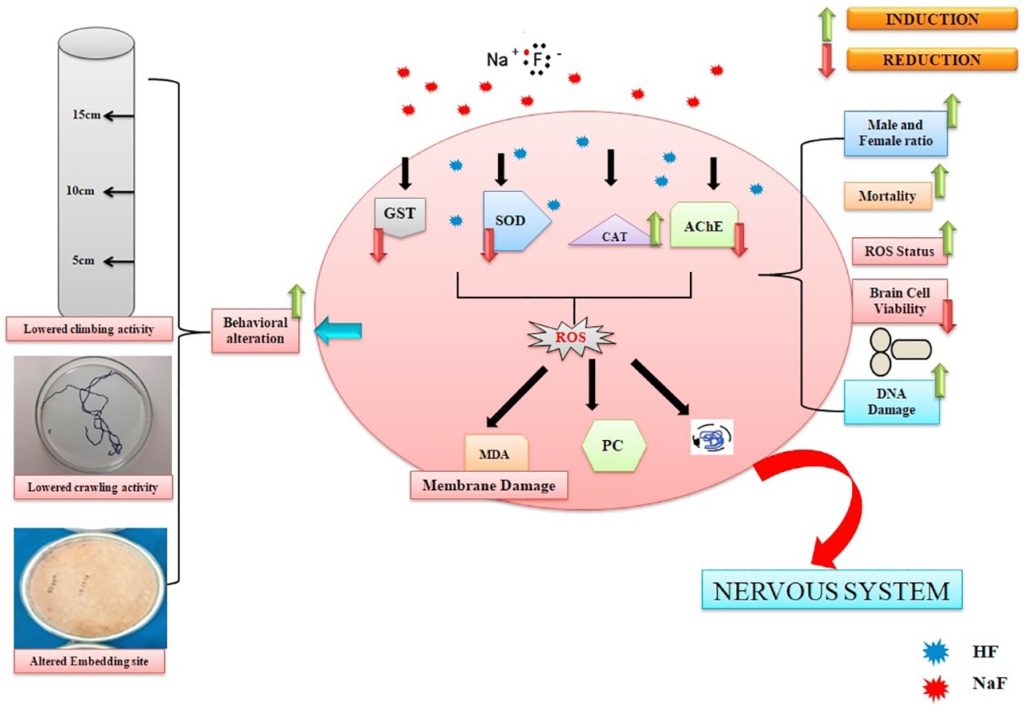Abstract
Highlights
-
- NaF exposure increases mortality and changes male-female ratio in Drosophila.
- NaF treatment alters the activities endogenous antioxidant enzymes.
- Chronic sub-lethal NaF exposure causes increased oxidative damage.
- NaF decreases brain cell viability and increases DNA damage.
- NaF exposure alters selected behavioral pattern in Drosophila melanogaster.
Reactive oxygen species (ROS) is known to be associated with the process of aging and other health hazards. Organisms are compelled to compromise with body homeostasis when exposed to toxic substances. In the present study sodium fluoride (NaF) exposure (10-100 µgmL-1) to Drosophila melanogaster in the parental (P) generation leads to increase in adult mortality and alteration in male-female ratio in the P and F1 (1st Filial) generation. Post-treatment alterations in selected behavioral traits (crawling, embedding and climbing) were observed in larvae and adults. Altered behavioral pattern was found to be associated with reduced mitochondrial activity and decreased number of viable brain cells in treated individuals. Interestingly, higher cholinesterase activities in treated males in comparison to females demonstrate a definite sex bias in NaF-induced response. Hyper-activation of antioxidant enzyme like catalase and reduced superoxide dismutase (SOD) and glutathione-s-transferase (GST) activity indicate a shift in the oxidative status after fluoride exposure. Additionally, increase in lipid peroxidation suggests enhancement in ROS which is further validated through increment in protein carbonyl content. Hence, the observations of the present study propose behavioral alterations resulting from increased ROS after chronic exposure to sub-lethal concentrations of NaF in D. melanogaster.

